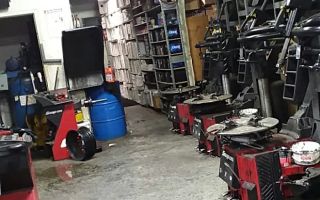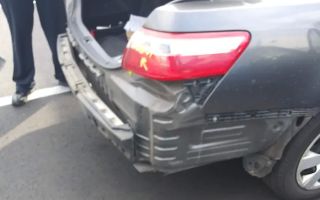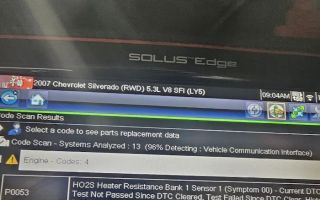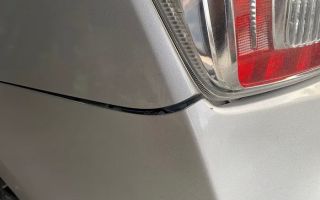How to Properly Connect Jumper Cables When Jumpstarting a Car: A Step-by-Step Guide
1. Understanding Jumper Cables and Their Purpose
Jumpstarting a car with a dead battery can be a lifesaver, but it's crucial to do it safely and correctly. The right tools and knowledge can make a world of difference. Jumper cables are designed to connect the battery of a working car to the battery of the vehicle with the dead battery, allowing the dead battery to charge temporarily so the engine can start. It's important to understand how to use jumper cables properly to avoid damage to your vehicle or injury to yourself.
In this guide, we'll walk you through the correct steps for jumpstarting your car using jumper cables, ensuring both you and your vehicle stay safe and sound throughout the process.
2. Essential Equipment for Jumpstarting Your Car
Before attempting to jumpstart your car, make sure you have the following items:
- Jumper Cables: The most important tool for the job. These cables should be in good condition, with no fraying or exposed wires.
- Another Car with a Working Battery: You'll need a second vehicle to provide the jump. It’s important that the second car’s battery is fully charged and in good condition.
- Safety Gear: While not mandatory, gloves and safety glasses are a good idea to protect yourself from potential sparks or acid splashes from the battery.
Once you have all the necessary equipment, you’re ready to begin the jumpstarting process.
3. Step-by-Step Guide on How to Properly Connect Jumper Cables
Now that you have all the equipment, let’s walk through the steps of jumpstarting your car:
- Step 1: Position the Cars - Park the working car next to the car with the dead battery. Make sure both vehicles are turned off, and the parking brakes are engaged.
- Step 2: Attach the Red Jumper Cable to the Positive Terminals - Start by attaching one end of the red (positive) jumper cable to the positive terminal of the dead car's battery. The positive terminal is usually marked with a "+" sign or the letters "POS."
- Step 3: Connect the Other End of the Red Cable to the Positive Terminal of the Working Car - Attach the other end of the red jumper cable to the positive terminal of the working car's battery. This step is essential as it allows the battery from the working car to transfer power to the dead battery.
- Step 4: Attach the Black Jumper Cable to the Negative Terminal of the Working Car - Connect the black (negative) jumper cable to the negative terminal of the working car’s battery. The negative terminal is usually marked with a "-" sign or the letters "NEG."
- Step 5: Connect the Other End of the Black Cable to a Metal Ground on the Dead Car - Attach the other end of the black jumper cable to an unpainted metal surface on the dead car, such as a bolt or engine part. This helps to prevent sparks near the battery.
- Step 6: Start the Working Car and Let it Run - Start the engine of the working car and let it run for a few minutes to charge the dead battery. Keep the engine running for about 5-10 minutes before attempting to start the dead car.
- Step 7: Start the Dead Car - After a few minutes of charging, try starting the dead car. If it starts, allow the engine to run for a while to ensure the battery gets a proper charge.
- Step 8: Disconnect the Jumper Cables in Reverse Order - Once the car with the dead battery is running, carefully disconnect the jumper cables in the reverse order: black cable from the ground, black cable from the working car, red cable from the working car, and red cable from the dead car.
Once the process is complete, drive your car for at least 20 minutes to allow the alternator to fully charge the battery. If the car does not start after several attempts, there may be a deeper issue with the battery or electrical system, in which case you should seek professional help.
4. Common Mistakes to Avoid When Jumpstarting Your Car
While jumpstarting your car might seem straightforward, there are a few common mistakes that drivers often make. Avoiding these mistakes can save you from unnecessary damage to your vehicle or a potential injury:
- Reversing the Cable Connections: Always double-check that you connect the positive terminals first and then the negative. Reversing the connections can cause electrical damage to both vehicles.
- Using Damaged or Worn-Out Jumper Cables: Always inspect the jumper cables before use. Worn-out cables with exposed wires can be dangerous and ineffective.
- Allowing Sparks Near the Battery: Always connect the negative jumper cable to a metal ground away from the battery. Sparks near the battery could cause an explosion.
- Not Letting the Cars Run Long Enough: After jumpstarting, make sure to let the engine of the revived car run for at least 20 minutes to charge the battery fully.
Being mindful of these common errors can ensure a safer and more efficient jumpstarting experience.
5. Real-Life Case Study: A Successful Jumpstart in an Emergency
Meet Mike, a busy father who found himself in a stressful situation one evening. He had just finished work, and as he tried to start his car to head home, the battery was dead. Fortunately, he had a set of jumper cables and knew how to properly connect them. Mike parked his car next to a coworker’s, and after following the steps outlined above, he was able to start his car in no time. He was able to head home safely without needing to call a tow truck, thanks to his knowledge of jumpstarting his car.
Mike’s story is a perfect example of how being prepared and knowing how to properly jumpstart a car can save both time and money. While Mike was lucky to have a working vehicle nearby, understanding how to safely use jumper cables can help anyone in a similar situation.
6. When to Call for Professional Help
In some cases, your battery may not charge properly, or there may be an underlying issue preventing your car from starting. If your car doesn’t start after several jumpstarting attempts or if you notice other electrical issues, it’s time to call in a professional. Professional towing services like Rescue & Towing are available 24/7 to assist with emergency car battery situations, from jumpstarting to towing if necessary.
In addition, if you’re unable to safely access your vehicle’s battery, a professional can help with more advanced procedures without causing damage to your car’s electrical system.
7. Recommended Towing and Jumpstart Services
If you’re looking for a reliable towing or jumpstart service, Rescue & Towing offers professional services that you can rely on, especially in emergencies. Their team is available 24/7 and can help with jumpstarts, battery replacements, and even towing if your car isn’t starting despite jumpstarting efforts.
Visit Rescue & Towing to learn more or schedule a jumpstart service.


























